Berlin is a city filled with history and many places to visit and explore. But it seems that most people come to Berlin to see all the same areas. This is why we decided to develop this alternative Berlin free tour article.
We are writing this article because Berlin is more than the Brandenburger Tor and the TV Tower in Alexanderplatz.
We have been writing about different places to see in Berlin since the beginning of 2013, and it made us see the city in which we chose to live in a completely different way. We walk around the streets of Berlin, looking for amazing places that most people don’t know.
Below, you can see some of these places we found throughout Berlin.
An Easy Alternative Berlin Free Tour
We focused on showing you that Berlin has something hidden, even close to the most famous places. It can be a War Memorial or a concrete cylinder from the ’30s. It can even be a tower left from the Berlin Wall. This city has a lot of hidden treasures, and I’m here to show you some of these places.
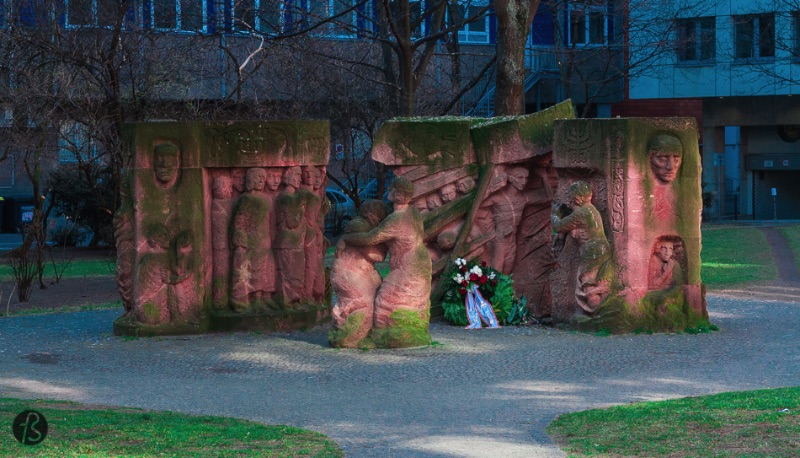
Rosenstrasse Protest Memorial on Alexanderplatz
Rosentrasse runs between Hakescher Markt and Alexanderplatz. It is one of these small roads, and you walk by without knowing what happened there. But this street is the place where the Old Synagogue used to stand before the Second World War.
Also, this is where a street protest in 1943 showed that resistance against Nazism was possible and that it could be successful.

Let’s go back to 1943 when hundreds of unarmed German women stood day and night for a week doing something unheard of in Nazi Germany. They stood close to Gestapo agents armed with machine guns and demanded their Jewish husbands’ release, locked up in a Jewish community center close to Alexanderplatz.
After a few days of struggles, their men were freed, and today, we remember their stand with the Block der Frauen.
Block der Frauen, Block of Women in German, is the work of Ingeborg Hunzinger, an East German sculptor who created the memorial for women who participated in the Rosentrasse Protest. It was erected in 1995, near where the protest happened in 1943.
Ingeborg Hunzinger first proposed the memorials to the East and West Berlin city councils in the late 1980s. But, even though the boards agreed to help with a portion of the construction cost, Ingeborg Hunzinger bore most of the expense herself. She is glad that she did the memorial since the Rosentrasse Protest was such a critical facet of the history of Berlin, and most people don’t even know it happened.
You can find the Rosentrasse Protest Memorial close to Alexanderplatz on Rosentrasse. If you are coming from Alexanderplatz, you will see it on your left side inside a small park.

Parliament of Trees Against War and Violence
The Parliament of Trees against War and Violence can be found close to the Reichstag. In German, this place is called Parlament der Bäume gegen Krieg und Gewalt and is a memorial for the people who died trying to cross the Berlin Wall.
Ben Wagin, a performance artist who has lived in Berlin since 1957, is responsible for creating this memorial on the border strip.
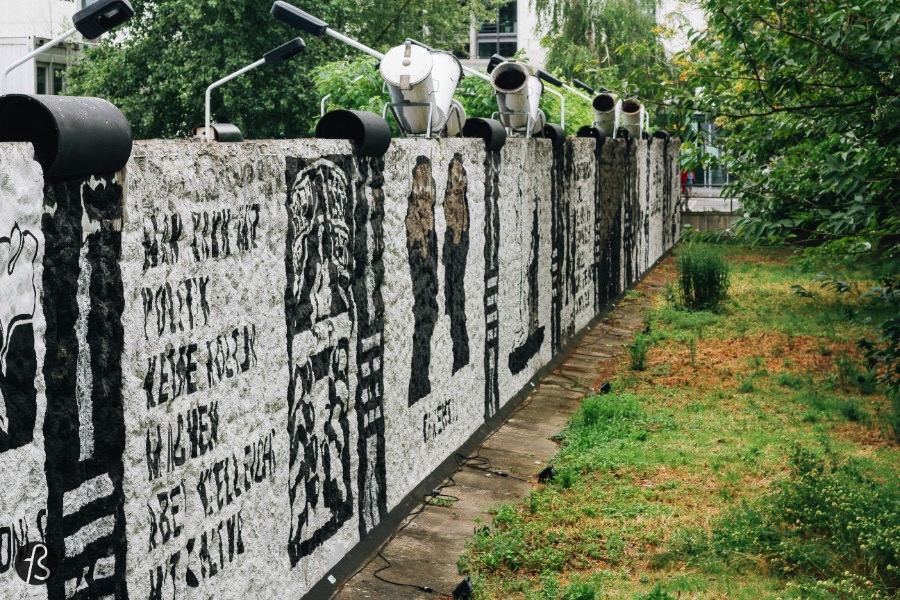
The installation was created in 1990, right after the fall of the Berlin Wall, and it’s made of trees, memorial stones, some parts and pieces of the border fortifications, and the names of the 258 people who died trying to cross the Berlin Wall.
The Parliament of Trees stands in the former no man’s land and is made of 58 pieces of the Berlin Wall. But this is not the centerpiece here. Everything in this memorial is about the trees. Trees were planted by the prime ministers of the sixteen states that formed the unified Germany. Sixteen trees stand there today and are the foundation for this environmental art piece.
You can reach the Parliament of Trees and the Wall Memorial from the Schiffbauerdamm promenade from 11:00 to 17:00, and admission is free.
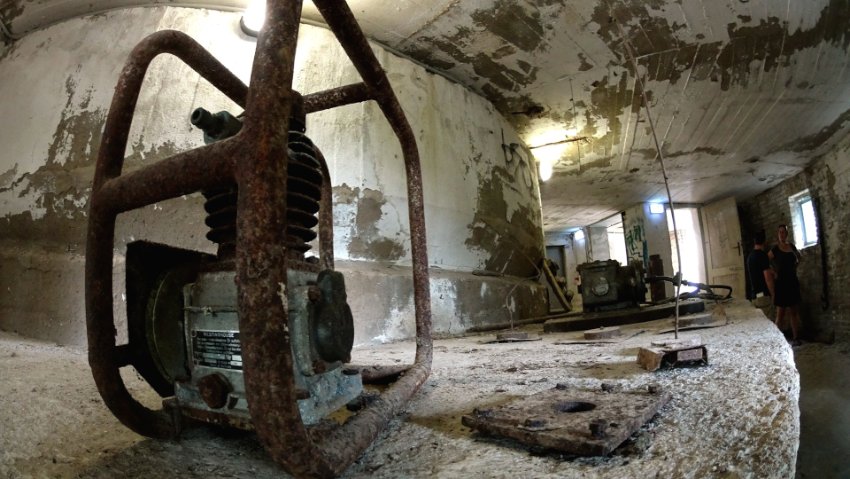
Schwerbelastungskorper
When walking around Tempelhof, a concrete cylinder isn’t the first thing that crosses your mind as a place to visit. But the Schwerbelastungskörper is more than just a bunch of concrete and scary German names.
The Schwerbelastungskörper is one of the few structures that survived to tell the story of Welthauptstadt Germania, the capital of the new German world that never survived the Second World War.
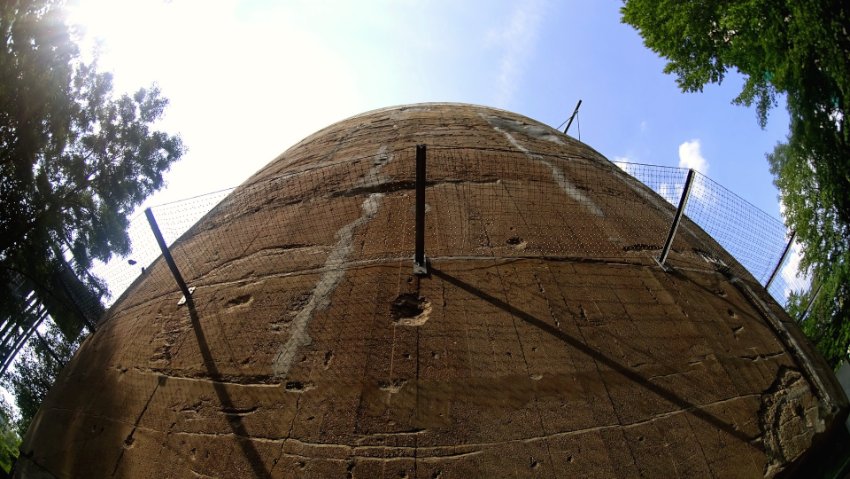
History says that back in the 1920s, Adolf Hitler used his artistic skills to sketch what he saw as the future capital of the German Empire. This city would be an improved version of Berlin, and it would be called Welthauptstadt Germania.
This would be the megalomaniacal dream of a crazy dictator, but we will never see this outside of the history books. The only thing we can see and visit is the concrete cylinder built by the orders of Albert Speer, the First Architect of the Third Reich, to see if it was possible to make the megacity.
Right now, you can only visit the Schwerbelastungskörper, do the historical tour, climb on the platform above it, and see the great view from the top. This is the best way to understand the massive size of this concrete structure.
The guided tours happen between April and October and are held by Berliner Unterwelten e.V. every Sunday at noon. If you don’t want to take the time, go to the corner of Dudenstrasse and General-Pape-Strasse, and you will find everything you need. The site is only open on Tuesdays, Wednesdays, Thursdays, and Sundays.
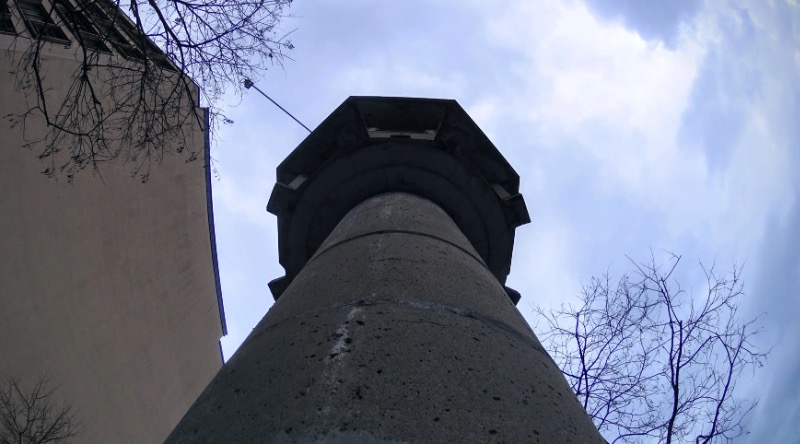
East German Watchtower on Potsdamer Platz
Sometimes, we think we know Berlin, and this city cannot surprise us that easily anymore. But, of course, we are always wrong. Berlin amazes us almost every day, and this is how we felt when we realized that, hidden in plain sight, there is an East German Watchtower on Potsdamer Platz.
This observation tower stood between the Brandenburg Gate and Leipziger Platz and was used as a base for border guards to monitor the area at the former House of Ministries. It was only in 2001 that this tower was moved to its present location near Stresemannstraße on Potsdamer Platz.

The construction of this BT 6 watchtower, the technical name for this East German Watchtower, began in 1966, and by the end of the GDR era, more than 200 of them followed the Berlin Wall. This one is the only one that still stands, and it’s quite weird to visit the place where so much had happened before.
When you visit the East German Watchtower, avoid wet days since there is not much space to protect the guards that keep the watchtower open. Opening hours are normally between 11:00 and 15:00, from Monday to Sunday.
We paid €3,50 for the 20 minutes we stayed there taking pictures and listening to the history behind this Cold War relic, and it was worth it.
The Giant Penis next to Checkpoint Charlie
Most tourists that take the U-Bahn to Kochstraße go there to see Checkpoint Charlie but miss one of Berlin’s most bizarre landmarks, just a block away.
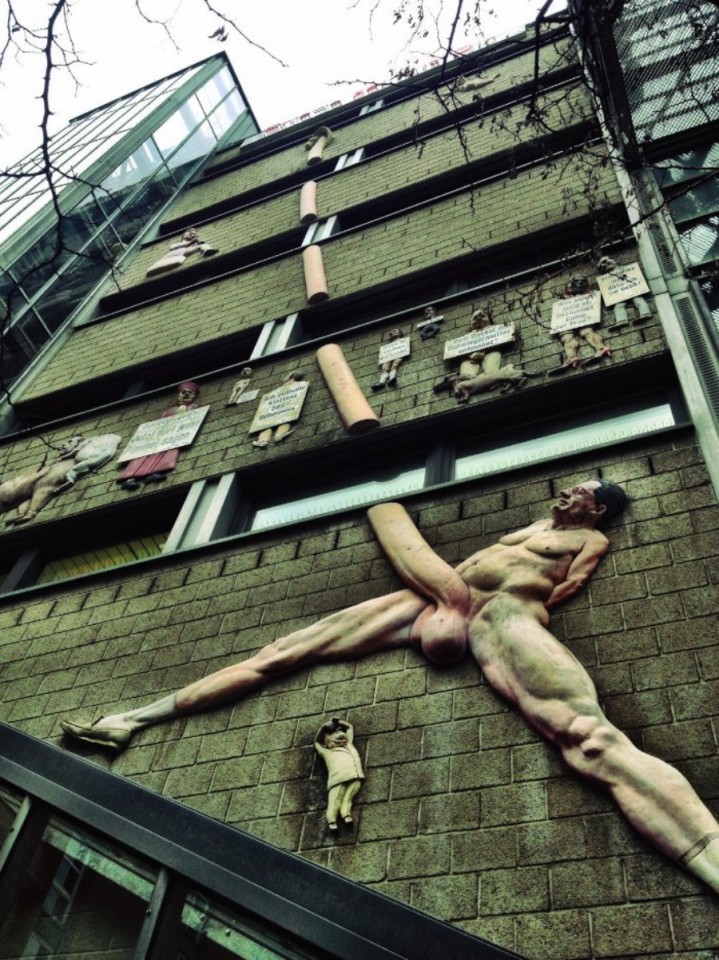
On the side wall of the Tageszeitung Building on Rudi Dutschke Straße is a sculpture called Peace be With You, created by Peter Lenk and erected in 2009. This weird sculpture has a giant penis spreading across a few floors and an uncanny resemblance to Bild’s editor Kai Diekmann, whose offices are across the street.
Most people don’t even see this piece of art when they walk by. Those who see it scratch their heads, wondering what it means. But to explain the meaning behind the artwork, we have to go back some years in the past and understand that the street where this artwork can be found hosts a long battle between the left-wing scene and the newspaper Bild, the most sold newspaper in Europe with a circulation of more than 3 million issues a day.
The battle started in the 1960s when student activists held Bild and its headlines responsible for the death of Benno Ohnesorg and the attempted assassination of the student leader Rudi Dutschke. But this was a long time ago, and we imagined that this sculpture had nothing to do with what happened.
This dispute between Bild editor-in-chief Kai Diekmann and the legendary left-wing Tageszeitung newspaper. But how does this sculpture add anything to the disagreement? We don’t know, but we love to walk by the building and see the weird faces some people do when they see this for the first time.
If you want to see one of the bizarre landmarks of Berlin in all its glory, go to the corner of Rudi Dutschke Straße and Charlottenstraße and look beyond the trees. There, you will see how weird Berlin streets can be.
Alternative Berlin Free Tour: 5 Alternative Sights in Berlin
Most people would say that the history of Berlin is filled with tragic events, and there is no way of saying this is a lie. Berlin was the center of most of the past in the last century, and it paid a high price for everything that happened.
It is better to visit the city trying to understand how it copes with its past than to ignore it. This is why we write about these places here and why you should also see them.